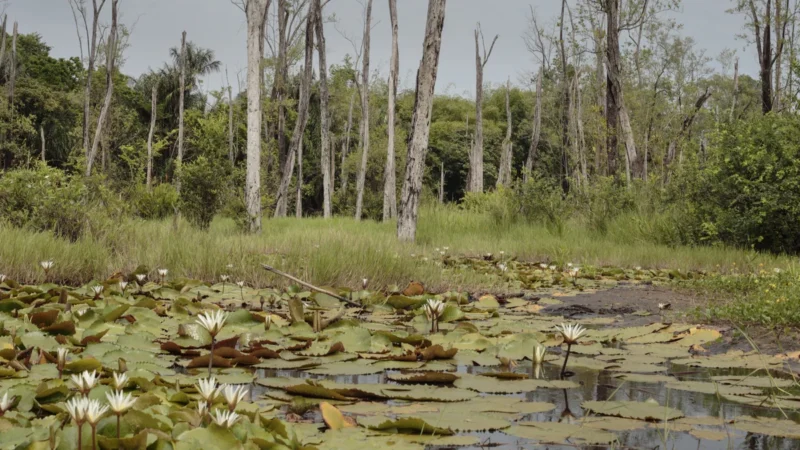Mangrove Benefits: How Mangroves Contribute to Economic and Ecological Prosperity?

Mangroves are a remarkable ecosystem found in coastal regions around the world. These unique coastal forests offer a wide range of benefits, both economic and ecological, that contribute to the prosperity of local communities and the planet as a whole. From providing vital habitat for wildlife to offering protection against natural disasters and supporting fisheries, mangroves play a crucial role in sustaining ecosystems and enhancing human well-being.
Ecological Significance of Mangroves
- Biodiversity Hotspots: Mangroves are among the most biologically diverse ecosystems on the planet. Their complex root systems provide shelter and breeding grounds for a variety of marine and terrestrial species. This diversity supports countless food chains and contributes to the overall health of the coastal ecosystem.
- Carbon Sequestration: Mangroves are renowned for their capacity to store and sequester carbon. Their dense vegetation captures and stores substantial amounts of carbon dioxide, helping mitigate climate change. Protecting mangroves is crucial in the global fight against rising greenhouse gas emissions.
- Water Filtration: Mangroves act as natural water filters. Their roots trap sediments and pollutants, ensuring that the water that flows into the ocean is cleaner and less harmful to marine life. This function is essential for maintaining the health of coastal waters.
Economic Benefits of Mangroves
- Fisheries Support: Mangroves serve as essential nurseries for various fish and shellfish species. These coastal forests offer a safe and nutrient-rich environment for juvenile fish to grow and mature. As a result, they boost local fisheries, providing livelihoods for countless people who rely on these resources for sustenance and income.
- Storm Protection: Mangroves act as natural barriers, reducing the impact of storm surges and protecting coastal communities from the devastating effects of hurricanes and tsunamis. The dense root systems and canopy of mangroves dissipate the force of waves, preventing erosion and reducing flood damage.
- Recreational and Tourism Value: Many tourists are drawn to the beauty and biodiversity of mangroves. Eco-tourism centered around mangrove forests can generate significant income for local communities, supporting the local economy and fostering environmental awareness.
- Timber and Non-Timber Forest Products: Mangrove wood and other non-timber forest products, such as honey and traditional medicines, have been used by local communities for generations. These resources can be harvested sustainably, providing additional sources of income.
Sustainable Management of Mangroves
To harness the economic and ecological benefits of mangroves, it is imperative to implement sustainable management practices. These practices encompass a range of strategies and approaches aimed at preserving and enhancing the ecological and economic value of mangrove ecosystems. Sustainable management involves the following key components:
- Mangrove Reforestation: Restoring damaged mangrove areas and establishing new ones can help counteract the loss of mangroves due to human activities and natural disasters. Replanting mangroves can lead to the recovery of ecosystems and their services.
- Community Involvement: Engaging local communities in the conservation and sustainable use of mangroves is crucial. When communities have a stake in mangrove management, they are more likely to adopt responsible practices and protect these valuable ecosystems.
- Research and Education: Investing in research and education about mangroves is essential to raise awareness and promote informed decision-making. Understanding the ecological and economic value of mangroves can lead to better policy development and conservation efforts.
- Integrated Coastal Management: Developing comprehensive coastal management plans that consider the role of mangroves in protecting against natural disasters and supporting livelihoods is critical. This can help balance economic development with environmental sustainability.
Key Takeaways
Mangroves are a vital component of coastal ecosystems, offering a multitude of economic and ecological benefits. Recognizing their significance and taking measures to protect and sustainably manage these ecosystems is not only a boon to local communities but also essential for the overall health of the planet. By understanding and harnessing the potential of mangroves, we can ensure both economic prosperity and ecological well-being for current and future generations.
FAQs:
Mangroves are unique coastal ecosystems characterized by salt-tolerant trees and shrubs that thrive in brackish water conditions. They are found in tropical and subtropical regions and are often located along coastlines and estuaries.
Mangroves are ecologically significant for several reasons. They provide critical habitat for a wide variety of wildlife, including fish, birds, and crustaceans. They also act as nurseries for many marine species, support biodiversity, and sequester carbon, helping mitigate climate change.
Mangroves offer numerous economic benefits. They support fisheries by providing a safe environment for fish and shellfish to grow, which is essential for local livelihoods. They also contribute to tourism, carbon trading, and the production of timber and non-timber forest products.
Mangroves act as natural buffers against storm surges and coastal erosion. Their intricate root systems and dense vegetation help dissipate the force of waves, reducing the impact of hurricanes, tsunamis, and other natural disasters on coastal communities.
Mangroves are highly effective at capturing and storing carbon dioxide. Their dense vegetation and waterlogged soils allow them to sequester significant amounts of carbon, making them valuable in the global effort to combat climate change.


